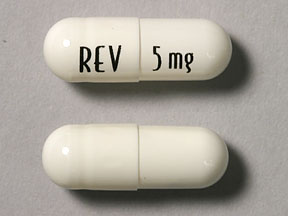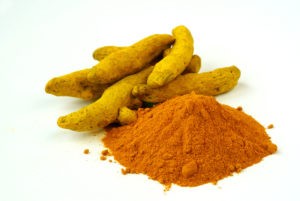
Recently Diagnosed or Relapsed? Stop Looking For a Miracle Cure, and Use Evidence-Based Therapies To Enhance Your Treatment and Prolong Your Remission
Multiple Myeloma an incurable disease, but I have spent the last 25 years in remission using a blend of conventional oncology and evidence-based nutrition, supplementation, and lifestyle therapies from peer-reviewed studies that your oncologist probably hasn't told you about.
Click the orange button to the right to learn more about what you can start doing today.
- You are here:
- Home »
- Blog »
- non-conventional therapies »
- Multiple Myeloma Therapy- MGN-3, Curcumin
Multiple Myeloma Therapy- MGN-3, Curcumin

This synergy was characterized by an 87% decrease in cell number and a 2.6 fold increase in the percentage of apoptotic U266 myeloma cells.
Multiple Myeloma (MM) is a rare (1% of all cancers), incurable form of blood cancer. Conventional oncology has gotten pretty good at putting newly diagnosed MMers into remission. For example, more than 90% of MMers achieve some form of remission when given the chemotherapy triplet RVd (revlimid, velcade, dexamethasone) as an induction therapy. Conventional, FDA approved multiple myeloma therapy however, will never cure multiple myeloma. MM patients must look outside the FDA box and consider multiple myeloma therapies that are evidence-based but non-convention. Consider MGN-3 and curcumin.
The good news is that MM patients achieve remission from their MM. The bad news is that they reach remission only to relapse months or years later. While the list of newly FDA approved MM therapies is long and growing, MM patients eventually achieve multi-drug resistence (MDR), and run out of therapy options.
According to the studies below, MGN-3 kills MM. Curcumin kills MM. Curcumin and MGN-3 synergize to enhance their MM killing properties.
Because low-dose maintenance revlimid has become a standard-of-care therapy for many MMers once they have completed induction therapy, it makes sense to me to add MGN-3 and curcumin therapy to this standard-of-care MM therapy in order to enhance the efficacy of revlimid therapy.
David Emerson
- MM Survivor
- MM Cancer Coach
- Director PeopleBeatingCancer
Recommended Reading:
- The Most BioAvailable Curcumin Formulas
- Myeloma Maintenance Beyond Lenlidomide/Revlimid
- Radical Multiple Myeloma Remission
“The immune modulatory effects by both MGN-3 and curcumin have been well documented. Earlier studies have shown that both agents are potent biological response modifiers that have the ability to boost different arms of the immune cells, such as NK cells, T cells, B cells, macro- phages, dendritic cells and Treg cells [11-14, 38-41]…
The present study was carried out to investigate the synergistic apoptotic potential of arabinoxylan rice bran (MGN- 3/Biobran) and curcumin (turmeric) on human multiple myeloma (MM) cell line U266 , in vitro. U266 cells were cultured with MGN-3 (50 or 100μg/ml) and curcumin (2.5-10μM) for 3 days.
The effects of MGN-3 and curcumin on the growth and survival of the U266 cells were determined by trypan blue, MTT assay, flow cytometry analysis of cancer cell cycle, and apoptosis. Expression of proapoptotic Bax, and antiapoptotic Bcl2 was determined by Western blot analysis.
Treatment with MGN-3 alone or curcumin alone caused a dose-dependent inhibition in the proliferation of U266 cells.However, a synergistic effect was noticed post-treatment with both agents that maximized at 100μg/ml MGN-3 plus 10μM curcumin.
This synergy was characterized by an 87% decrease in cell number and a 2.6 fold increase in the percentage of apoptotic U266 myeloma cells. Cell cycle analysis showed a 53% decrease in the percentage of cells in the G0-G1 phase treated with MGN-3 and curcumin (from 36% to 17%).
Analysis of the expression of the pro and antiapoptotic molecules Bax and Bcl-2 revealed synergistic effects of these agents, as the expression of Bcl-2 was decreased and Bax was increased. This resulted in a cellular microenvironment favorable for apoptosis.
We conclude that MGN-3 and curcumin synergize in the induction of U266 cell apoptosis. This data may establish the foundation for in vivo studies that could have therapeutic implications.
These characteristics, in addition to their ability to synergize in inducing apoptosis of cancer cells may add an additional weapon for fighting cancer. This may suggest a rationale for considering the combination of MGN-3 and curcumin in future studies for the treatment of multiple myeloma in clinical trials…
Synergistic effects of curcumin and bortezomib on multiple myeloma cells
“However, when bortezomib was combined with curcumin, the effects on cellular proliferation and apoptosiswere significantly enhanced, indicating the syn- ergistic effects of curcumin and bortezomib…
In conclusion, our results showed that, curcumin treatment alone significantly inhibited the proliferation and enhanced the apoptosis of MM1.R cells, in a dose-dependent manner. Themonotherapy of bortezomib did not significantlyalter the cell proliferation and apoptotic pro- cess. When the cells were treated with the combination of curcumin and bortezomib, fur- ther suppressed proliferation and enhanced apoptosis would be observed in these MM1.R cells.
In addition, the combination treatment could significantly increase the activation ofcaspase-3 and -9, and decrease the expres-sion levels of NF-κB and HSP-90, in MM1.R cells. Our findings suggest that, curcumin could enhance the sensitivity of MM1.R cells to bort- ezomib, and they could exert synergistic effects on MM1.R cells, inhibiting cell proliferation and enhancing cellular apoptosis, via the regulation of the expression of NF-κB and HSP-90. These findings provide evidence for application of the combination of curcumin and bortezomib in the treatment of MM…”
“Here, we present a case of a heavily pretreated relapsing myeloma patient who, in the absence of further treatment options at the time, started daily curcumin and has since remained stable for the past 5 years…”
First and foremost it is important for newly diagnosed MMers to understand that conventional oncology (FDA approved) has become good at putting your MM into remission. Your challenge then, is finding multiple myeloma treatments that give you long-term stabilization. Curcumin may be one answer.
Your oncologist might refer to this as your cancer being incurable but “very treatable” .
Secondly it is important to understand that, according to the article linked and excerpted below, your median overall survival is 5.2 years. As a MM survivor I found that median overall survival to pass very quickly… Reaching remission (complete or partial) feels pretty good once you’ve been diagnosed with an incurable cancer. Relapsing fells pretty bad. Remission, relapse…and so it goes.
Please remember that the case below is one person. Conventional oncology calls this “anectodal” evidence. I understand the importance of testing large numbers of MMers to prove any therapy but I have read countless studies of curcumin in the successful treatment of MM.
The challenge that all MMers face is that we all “relapse” eventually. Further, MM eventually becomes “refractory” or ” Refractory myeloma is when myeloma is not responsive to therapy.” If a MM patient pursues only conventional therapies, he/she will eventually run out of options.
The significance of the article below then, is that an evidence-based yet non-conventional therapy, curcumin, has been shown to help the MM survivor “remain stable for the last 5 years with good quality of life.” Curcumin can be an effective adjunct to conventional MM therapy.
Let me complicate curcumin supplementation a bit. Pure curcumin has been shown to be poorly absorbed in the blood stream. Studies shown that specific formulas of curcumin are much more absorbable or bioavailable than pure curcumin. Three of the most bioavailable curcumin formulas are Doctor’s Best, Life Extension and Meriva.
Recommended Reading:
- Multiple Myeloma- Low-Dose Rev. after Induction Therapy?
- Multiple Myeloma- RVd Induction w/ Curcumin and Omega 3?
- Cancer Coach-“My dad- 70, SBP, now multiple myeloma?
Long-term stabilisation of myeloma with curcumin
“Summary- Myeloma is a haematological malignancy which typically follows a relapsing-remitting course. While treatment can control the myeloma and improve quality of life for given periods of time, remissions generally become progressively shorter with subsequent relapses, and patients ultimately enter a final refractory phase. To help control symptoms and enhance quality of life, some patients use complementary therapies as an adjunct to their conventional therapy. Here, we describe a myeloma patient who started a daily dietary supplement of curcumin when approaching her third relapse. In the absence of further anti-myeloma treatment, the patient plateaued and has remained stable for the last 5 years with good quality of life…
Over the past decade, advances in the understanding of the disease, together with the development of several novel treatments, have led to significant improvements in overall survival.2
Despite this, myeloma remains incurable, with a median overall survival of 5.2 years from diagnosis...
Here, we present a case of a heavily pretreated relapsing myeloma patient who, in the absence of further treatment options at the time, started daily curcumin and has since remained stable for the past 5 years…”
The Most BioAvailable Curcumin Formulas
“Based on a review of these studies, it is evident that better bioavailability of formulated curcumin (CU) products is mostly attributed to improved solubility, stability, and possibly low first-pass metabolism”
A search of the Pubmed database for the word curcumin yields 601 studies spaning health topics from multiple myeloma and colorectal cancer, to chemotherapies that synergizes with CU, to Alzheimer’s Disease, arthritis and more. Based on years of reading studies and personal accounts, I think it is safe to say that CU supplementation is safe and relatively inexpensive.
I have read about myeloma patients taking daily doses of CU from 400 milligrams to 8 grams (1000 milligrams = 1 gram). By almost any measure, CU is a safe, inexpensive wonder drug.
The only challenge is that CU is famously difficult to absorb in the body. In other words, a person has to mix curcumin with some sort of fat (coconut oil, chocolate, etc.) or take a brand of curcumin capsule that is already formulated to be more “bioavailable” in order to derive the full benefit of CU.
The study linked and exerpted below reviews different formulations of CU. The study itself lists the three most bioavailable formulation/brand of CU and I’ve added an excerpt from a further review from Consumerlab.com that lists four additional bioavailable brands of CU.
Recommended Reading:
- CU versus Turmeric as Cancer Therapy-What’s the Difference?
- CU Suppresses Colon Cancer, Enhances Chemotherapy
- Prostate Cancer: CU Curbs Prostate Cancer Metastases, Study Shows
- CU vs. cancer: The scientific evidence continues to pile up
Curcumin
“CU is a bright yellow chemical produced by some plants. It is the principal curcuminoid of turmeric (Curcuma longa), a member of the ginger family, Zingiberaceae. It is sold as an herbal supplement, cosmetics ingredient, food flavoring, and food coloring.[1]“
Bioavailable curcumin formulations: A review of pharmacokinetic studies in healthy volunteers.
“Curcumin is a widely studied natural compound which has shown tremendous in vitro therapeutic potential. Despite that, the clinical efficacy of the native CU is weak due to its low bioavailability and high metabolism in the gastrointestinal tract. During the last decade, researchers have come up with different formulations with a focus on improving the bioavailability of curcumin. As a result, a significant number of bioavailable curcumin-based formulations were introduced with the varying range of enhanced bioavailability.
The purpose of this review is to collate the published clinical studies of CU products with improved bioavailability over conventional (unformulated) CU. Based on the literature search, 11 curcumin formulations with available human bioavailability and pharmacokinetics data were included in this review. Further, the data on clinical study design, analytical method, pharmacokinetic parameters and other relevant details of each formulation were extracted.
Based on a review of these studies, it is evident that better bioavailability of formulated curcumin products is mostly attributed to improved solubility, stability, and possibly low first-pass metabolism. The review hopes to provide a quick reference guide for anyone looking information on these bioavailable curcumin formulations.
Based on the published reports,
exhibited over 100-fold higher bioavailability relative to reference unformulated CU. Suggested mechanisms accounting for improved bioavailability of the formulations and details on the bioanalysis methods are also discussed.”
According to Consumerlab.com:
“Novasol has the highest bioavailability (185 x compared to unforumulated CU), followed by Curcuwin (136 x), Longvida (100 x), Meriva (48 x), BCM-95 (27 x), Curcumin C3 Complex + Bioperene (20 x), and then Theracumin (16 x).”




